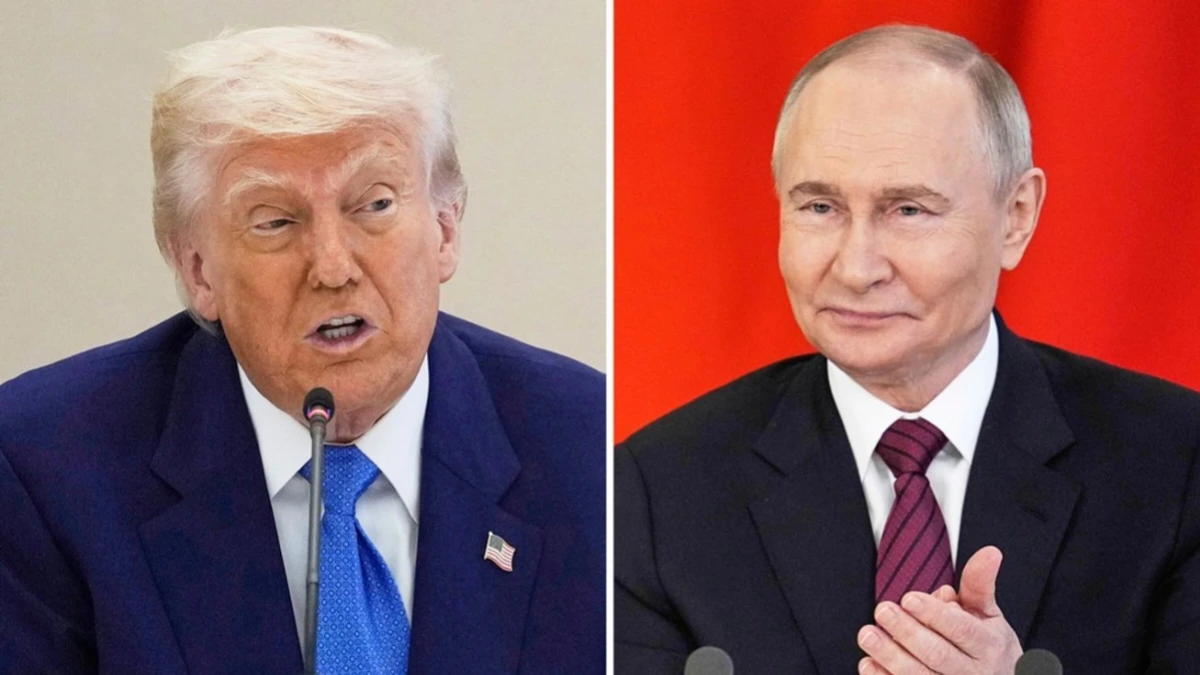WASHINGTON — Tomahawk missiles dominated Washington’s foreign policy chatter this week as President Donald Trump appeared to waver on whether to arm Ukraine with long range weapons capable of striking deep inside Russia.
The debate intensified after Trump’s lengthy Thursday phone call with Russian President Vladimir Putin, which reportedly led to an agreement for another face to face meeting in Budapest within weeks.
Critics on Capitol Hill quickly accused Trump of backing down. Former Republican congressman Adam Kinzinger called the move “another case of TACO Trump Always Chickens Out.” A senior Democratic senator said the president was “rolling out the red carpet for Moscow.”
Yet foreign policy analysts and administration officials argue that Trump’s decision reflects a broader strategy aimed at maximizing pressure on Russia rather than yielding to it.
The Tomahawk question has been central to Trump’s high stakes diplomacy. The missiles, known for their precision and range of up to 1,500 miles, would give Ukraine unprecedented reach against Russian military and energy targets.
Last month, Trump hinted at sending the weapons during an in flight conversation with reporters en route to Israel. “If the war is not settled, we may do it,” he said aboard Air Force One.
Days later, his social media post suggesting that Ukraine could “take back their Country in its original form” fueled speculation of an imminent policy shift.
But following Putin’s outreach, the tone shifted. “I did actually say, ‘Would you mind if I gave a couple thousand Tomahawks to your opposition?’ He didn’t like the idea,” Trump told reporters at the White House on Thursday evening.
The conversation, officials said, was less about concession and more about positioning. “This is classic Trump he rattles the cage first, then negotiates from strength,” a senior National Security Council official said, speaking on condition of anonymity because the talks were ongoing.
Experts see Trump’s approach as part of a familiar playbook that blends threat with unpredictability.
“Trump understands the psychological value of escalation,” said Evelyn Parker, a senior fellow at the Atlantic Policy Institute.
“Floating the idea of Tomahawks was meant to remind Moscow that Washington has options, even if those options remain on the table for now.”
According to the Financial Times, Putin miscalculated during their Alaska summit in August, when he attempted to lecture Trump on Russian history.
Trump reportedly “raised his voice several times” and threatened to walk out. That account, analysts said, contradicts the narrative that Trump is overly deferential to Moscow.
“This administration’s pressure campaign has real teeth,” said Pavel Ivanov, a defense analyst based in Prague.
“Russia’s oil production has been disrupted, and Ukraine’s drone strikes supported by US intelligence are inflicting sustained economic damage.”
Ukraine’s recent attacks have taken an estimated 20 percent of Russia’s fuel production offline, according to Ukrainian President Volodymyr Zelensky.
The strikes, largely carried out with domestically developed drones, were aided by US intelligence identifying vulnerable energy targets and flight paths that could bypass Russian air defenses.
Meanwhile, global oil prices have fallen to their lowest point in nearly five years, amplifying the economic pain for Moscow.
The combination of declining revenue and battlefield losses has squeezed the Kremlin’s ability to sustain prolonged military operations, experts said.
Congress is expected to advance a sanctions package next week that would give the White House wider latitude to tighten economic restrictions on Russian financial institutions, further bolstering Washington’s leverage.
In Kyiv, Trump’s mixed signals have stirred both concern and cautious optimism. “We understand that diplomacy involves signals and pressure,” said Oksana Hrytsenko, a political analyst with Ukraine’s Institute for Strategic Studies.
“But for us, what matters is sustained support whether that comes in the form of intelligence, weapons, or sanctions.”
Some Ukrainian officials expressed frustration over delays but acknowledged that even the discussion of Tomahawks sends a powerful message.
“When the world hears the US debating long range missiles, Russia listens carefully,” said Andriy Melnyk, a member of Ukraine’s parliamentary defense committee.
In Moscow, state media portrayed the episode as evidence of Trump’s “realism.” Yet Russian independent analysts viewed it differently.
Putin knows he’s not dealing with the same dynamic he had before, said Tatiana Kulikova, an editor at the independent outlet Novaya Vremya. “The threat of Tomahawks is as potent as the missiles themselves.”
As Trump prepares for his next meeting with Putin in Budapest, the contours of a potential peace deal remain largely unchanged.
The proposal would likely freeze the conflict along existing front lines, leaving Russia with de facto control of occupied territories while offering Ukraine enhanced Western security guarantees.
“It’s not the ideal outcome for Kyiv, but it would preserve Ukraine’s sovereignty and end the bloodshed,” said John Matthews, a former US ambassador to NATO.
At the same time, Washington and its European partners continue exploring additional measures to constrain Russia’s war capacity.
These include targeting the so called “shadow fleet” of oil tankers that help Moscow evade sanctions and considering no fly zones supported by a European “coalition of the willing.”
Trump’s Tomahawk diplomacy remains a balancing act between threat and restraint. While critics cast his moves as inconsistency, administration insiders insist it is a deliberate effort to pressure Russia into meaningful talks without triggering open escalation.
“If flexibility is shown, I think we have a very good chance bringing this war to conclusion,” Trump said Friday, acknowledging that Putin “might be playing for time.”
For now, the Tomahawks stay in reserve a potent reminder that America’s leverage over Russia remains intact, and its strategy, though misunderstood, may be more calculated than it appears.

